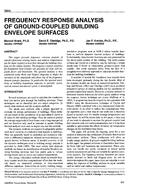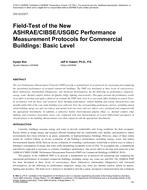Heat pumps have grown in popularity in recent years, and are now used to heat over 12 million U.S. homes (U.S. Energy Information Administration,2017). While air source heat pumps can provide outstanding performance at high ambient temperatures, their efficiency (strictly their coefficient ofperformance) and capacity both degrade at low ambient temperatures when heating demand is highest. Some homeowners utilize hybrid (or dual fuel) heatingsystems, which use a heat pump at high ambient temperatures and a furnace at lower temperatures when the heat pump’s capacity is insufficient. Thesehybrid systems allow the homeowner to avoid the additional capital cost of installing a larger heat pump to meet peak heating demand.
This study discusses heating choices for single family homes that currently use a central air unit for cooling alongside a natural gas or fuel oil furnace forheating. We determine that in most US climate zones, it is prudent to replace an air conditioner at the end of its life with a heat pump sized for the peakcooling load and operate it in tandem with the existing furnace. We also assess the emission implications of such a conversion and determine the electricityprices below which a homeowner will break even over the investment’s lifetime.
Citation: 2020 Winter Conference, Orlando, FL Conference Papers
Product Details
- Published:
- 2020
- Number of Pages:
- 10
- Units of Measure:
- Dual
- File Size:
- 1 file , 1.3 MB
- Product Code(s):
- D-OR-20-C016


